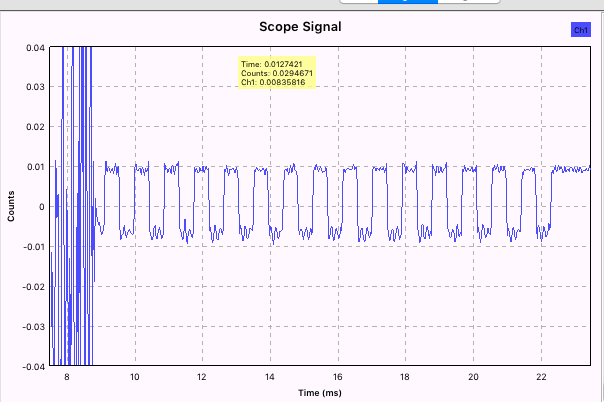That looks very nice:
I don't 100% agree with your phrasing on this one:
however, my quadrature demod is capturing large amounts of noise during the idle periods.
Well, the quadrature demod takes successive samples and gives you the phase advance between them. If you only capture silence, or more precisely, the noise between packets, the phase of each sample should (in theory, at least) be absolutely uniformly random – and hence, your phase increases, too, should be random. Remember: the amplitude of an FM-demodulated (analog or digital) signal is not proportional to the original signal's power at the receiver (that's the beauty of FM).
There's different ways to tackle this; a simple one is in the "Power Squelch" blocks in GNU Radio (which really do what their name suggests – make sure the signal is suppressed as long as its samples are below a certain |·|² threshold). You could add one before your quadrature demod.
Another method: The mean of your "demodulated noise" should be 0 – so if you low-pass filter your demodulated signal so that you can still make out the symbols, but the phase-noise induced "jumping" gets averaged to a 0, you could just have a decider afterwards that says "ok, this is a 1 or a -1 in a packet, or this is a 0 belonging to inter-packet time".
Remarks:
- Instead of multiplying with a complex cosine, you can use the "Rotator" block; should be a bit faster (not that it matters at these rates at all).
- Even more comfortably: You can simply replace your low-pass filter, multiplier and cosine by a single "Frequency Xlating FIR". Use the "Low Pass Filter Taps" block to calculate the taps for the filter you want, and use the
idof that block in the xlating FIR's "taps" field. - As noted in the comments: I recommend new designs use Qt instead of WX GUI, because WX is no longer maintained and will go away in future releases (i.e. GNU Radio 3.8)
- The hard part might be recovering the timing of the symbols – Look at the synchronizers GNU Radio offers. Classically, many designs used Müller&Muller, but to be honest, that is an algorithm designed for implementation in hardware, not software. It's a bit involved to parameterize that, the "PFB clock sync" should behave better (it does, in fact, work similarly to M&M, but is quite a bit more accurate in approximating the derivative of the signal)
- A quadrature demod is not the only thing that can decode an FSK: try filters that select each FSK frequency, followed by a complex to mag square each, and a "max" block. If you're clever about designing your filters (ie. don't overspecify things), this is, on PC-style hardware, not necessarily harder on the CPU than the $\arctan$ that quadrature demod has to do. [1]: https://i.sstatic.net/1ItSC.png

